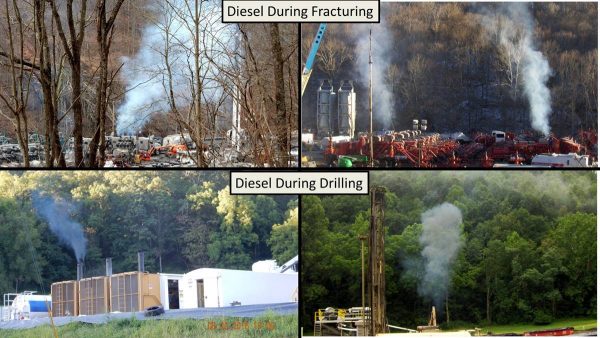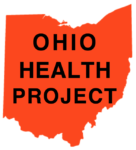Update: February 11, 2017 Charleston Gazette-Mail: DEP eliminates protections for noise, light from natural gas facilities
In May 2014, Dr. Michael McCawley, of WVU’s School of Public Health submitted a study titled “Air, Noise, and Light Monitoring Results for Assessing Environmental Impacts of Horizontal Gas Well Drilling Operations (ETD‐10 Project)” to WV DEP’s Division of Air Quality.
A pdf of the 206-page report is below.
The report recommends:
3.2.1 A more definitive sampling and health effects study needs to be done in West Virginia to address the issues of potential exposures from gas drilling to the people in the State. The topography of West Virginia, more so than for the states around it, lends itself to increasing the concentration of emitted contaminants because of the complex terrain, the increased likelihood of atmospheric inversions in that terrain and the microclimatology during certain seasons. Much greater funding and time would be needed, though, than for the study described in this report to come to a conclusion. Input and cooperation should be sought from all concerned parties to assure the success of the study.
Here are some excerpts of the report, as prepared by Bill Hughes (emphasis his own):
Air, Noise, and Light Monitoring Results–WVU McCawley
The West Virginia Natural Gas Horizontal Well Control Act of 2011 required determination of the effectiveness of a 625 foot set‐back from the center of the pad of a horizontal well drilling site. An investigation was conducted at seven drilling sites to collect data on dust, hydrocarbon compounds and on noise, radiation and light levels. The findings are:
The duration of the specific activity of interest at each of the sites was a week or less. This time constraint did not allow comparison of the collected data to limits in the NAAQS–National Ambient Air Quality Standards–and therefore did not allow recommendations to be made for a setback distance based on the NAAQS values.
…benzene concentrations were, however, found to be above what the CDC calls the “the minimum risk level for no health effects.” This is a concern for potential health effects that might arise due to these exposures over a long time.
A health effects‐based setback distance proposal might require a study with a lengthy (3 years or more) sampling effort, greater detail in the chemical analysis, a larger number of sites and some effort to assure that the sites represent the range of exposures that a typical population could experience.
One or all of the BTEX (i.e. organic chemicals Benzene, Toluene, Ethylbenzene and Xylenes) compounds were found at all drilling sites ‐ which is similar to what other studies have reported. It appears that any of these compounds could come from diesel emissions rather than from drilling at the well pad, but diesel traffic is still part of the activity on all the sites and needs to be taken into account.
There was activity associated with the drilling site and with the source of air contaminants and noise at 625 feet and farther from the center of the pad. A setback distance of 625 feet from the center of the pad, therefore, does not assure That residences would be unexposed to contaminants from drilling site activity.
Point sources such as drilling operations and gas processing plants, cannot be appropriately monitored even by several fixed units spread over a large area. It also should be noted that assessment of lifetime exposure levels requires either very long term continuous monitoring such as provided by fixed units or extensive, randomly selected, multiple short duration samples on a long term basis. Lifetime exposures cannot be estimated from a small number of short term measurements. Although the contaminant plumes of point sources ultimately contribute to the average compositions of air they can only be effectively monitored using targeted technologies that allow greater spatial granularity.











